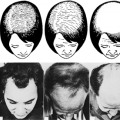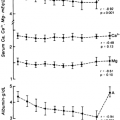POORLY DIFFERENTIATED (“INSULAR”) CARCINOMA
Part of “CHAPTER 41 – UNUSUAL THYROID CANCERS“
Insular thyroid carcinoma was originally described as Wuchernde Struma20 and later became known as insular carcinoma because of the tendency of the polygonal cancer cells to grow in nests or insulae.21 The growth pattern of insular carcinoma is distinct from that of the usual forms of thyroid carcinoma. The cells lack the nuclear features of papillary cancer; thus, these tumors are generally considered variants of follicular carcinoma. However, small foci of more typical well-differentiated cancers, including papillary cancer, are occasionally identified within or adjacent to the poorly differentiated component. The histologic patterns of poorly differentiated follicular cancers can vary from solid, to insular, to trabecular. Frequently, all three histologic patterns are seen within the same tumor. The exact percentage of tumor in the poorly differentiated pattern required for diagnosis is not clear because similar prognoses have been identified for patients with a predominantly poorly differentiated pattern and for those with a predominantly well-differentiated pattern.22
DEMOGRAPHICS AND PATHOGENESIS
Patients with poorly differentiated carcinomas tend to be older (mean of 54 years) than those with well-differentiated tumors, and their tumors tend to be larger.23 Insular carcinomas are uncommon, representing 1% to 2% of all thyroid cancers. The absence of a clear pathologic definition for this tumor (e.g., the amount of tumor required to be categorized as this pattern) make incidence studies difficult to interpret.
Stay updated, free articles. Join our Telegram channel

Full access? Get Clinical Tree





